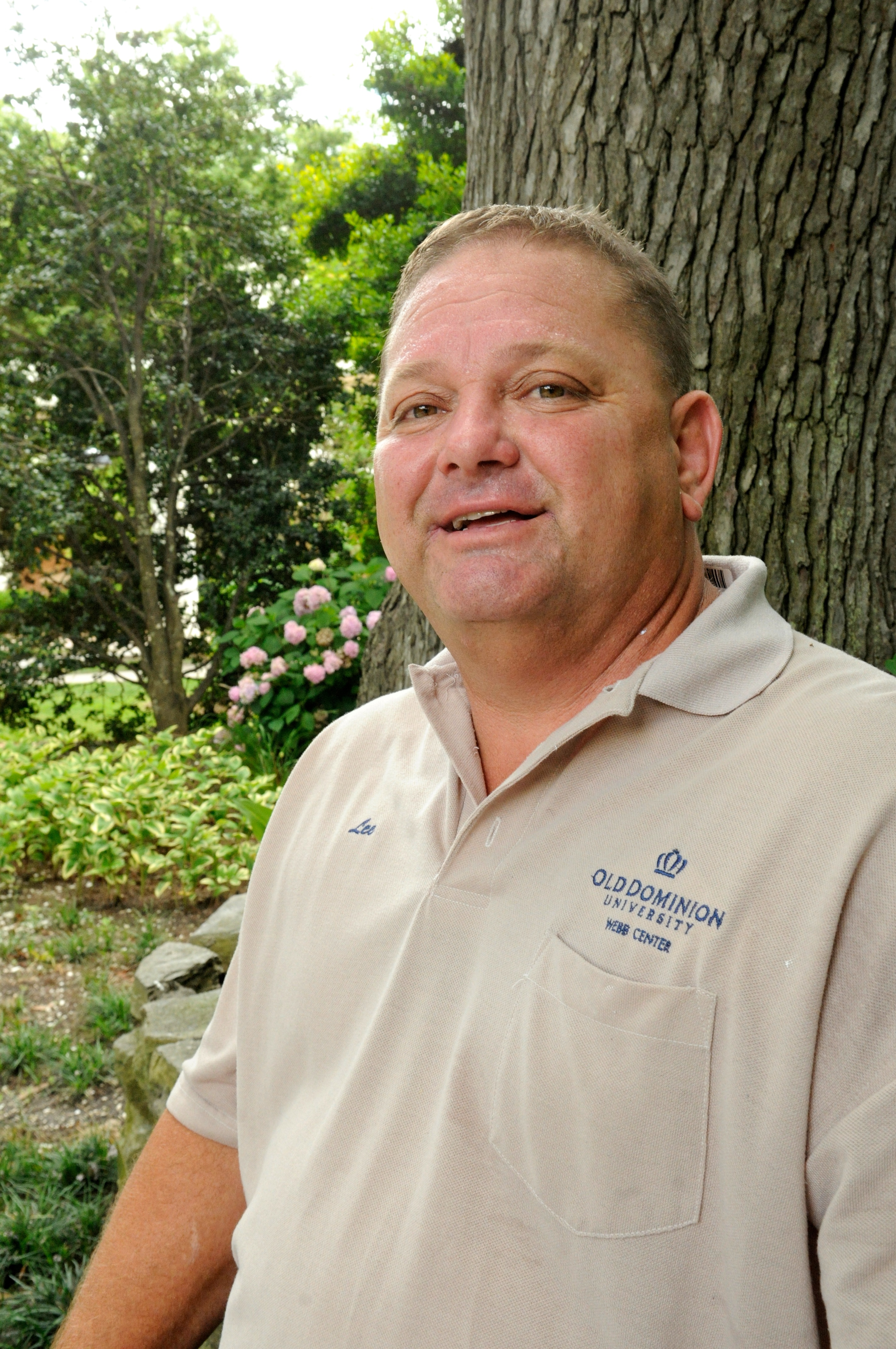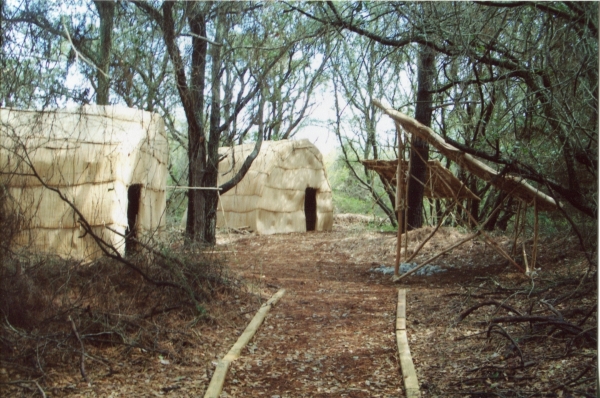ODU's Lockamy Builds 'Yeehawkans' to Promote Native American Culture
 Lee Lockamy
Lee Lockamy
 Replica Indian structures built by ODU's Lee Lockamy
Replica Indian structures built by ODU's Lee Lockamy
Lee Lockamy works in Auxiliary Services at Old Dominion University, using his general mechanical skills to keep Webb University Center in good working order. On his own time, he uses those same skills to promote the heritage of his ancestors, the Nansemond Indians, who were established in southeastern Virginia when English settlers arrived in the early 17th century.
This summer, Lockamy will begin work on a traditional Indian longhouse - a family dwelling - at the Nansemond tribe's planned Mattanock Town in Suffolk. During the past decade he has built more than 24 of these houses and other Indian structures.
Most of the structures were built in Virginia Beach - at Fort Story, First Landing State Park and Virginia Aquarium and Marine Science Center - as part of special exhibitions associated with the Jamestown Settlement 400th anniversary celebration in 2007. He is a member of the Virginia Beach Historic Preservation Commission.
Lockamy, who came to work at ODU less than two years ago, already has contributed a Nansemond Indian display to the university's International Festival earlier this year. Currently, he's working with the Intercultural Center to plan a Nansemond Indian exhibit on the campus during American Indian month in November. "We hope to have ODU students come to Mattanock Town to help build structures with us," Lockamy said.
When he was 20 years old, Lockamy learned that he was descended from the Nansemond Indians through his father's family. During the last 15 years, he has been very active in promoting the revitalized 200-member tribe, often working in conjunction with Helen Rountree, the ODU professor emerita of anthropology. She has long been a champion of the Powhatan Indian nation, with which the Nansemonds were associated, and has helped with the plans to build an authentic village, Mattanock Town, on 70 acres the city of Suffolk gave to the Nansemonds two years ago.
Rountree, who serves as secretary and historian for the tribe, has written numerous books about Indian tribes on the mid-Atlantic coast. "She's always been on the side of the Indians," Lockamy said. "She's opened up a lot of doors for us."
Lockamy has also served as a tribal historian and has a collection of Indian artifacts that he has found or inherited. "I do lectures and back them up with the artifacts," he explained.
But his prize contribution to the tribe has been his construction of the Indian dwellings, called "yeehawkans." He uses hardwood branches that are bent to form arched frames, and the frames are covered with layers of reed mats.
Mattanock Town offers Lockamy his first chance to situate houses in a village laid out as the Nansemonds actually did it. Most of his structures, and, indeed, most replica Indian villages in coastal Virginia, have been placed tightly together, sometimes within a palisade wall. "But that's not the way it was," Lockamy said. "Nansemond Indian villages could stretch for a mile or two along a river, with houses scattered here and there and the cropland in between." That, he said, will be the layout the Nansemonds use at Mattanock Town, which is planned as a village that will draw tourists and expand awareness of American Indian culture.

